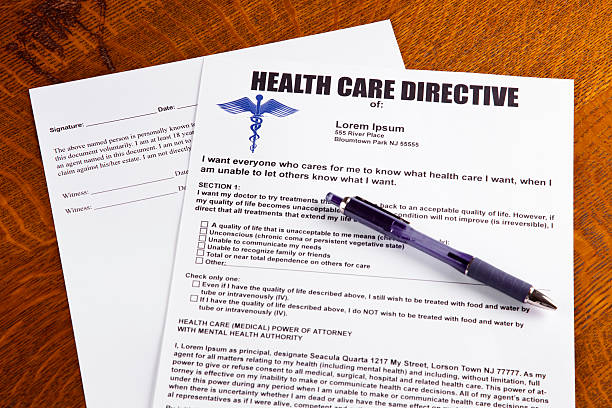Crafting your healthcare directive is a wise step. This document is a guide for your medical care if you can’t communicate. It helps ensure your wishes are followed, bringing peace to you and your loved ones. When creating your directive, it’s important to be clear and detailed. Include your preferences for treatments, life support, and organ donation. Consider naming a trusted person to make decisions on your behalf. This person could be a family member, friend, or even a lawyer. Communicate with them about your values and desires. Your healthcare directive can be updated as your views or circumstances change. Make sure to inform your doctors and family about it. This helps keep everyone on the same page. A well-constructed directive isn’t just for the elderly or sick. It’s for anyone who wants to have a say in their medical future.
Why a Healthcare Directive Matters
A healthcare directive ensures your medical wishes are respected. In times of medical crisis, you might not be able to voice your preferences. In these moments, your directive acts as your voice. It speaks for you when you can’t. You specify what kinds of treatments you want or don’t want. This reduces stress for your loved ones and helps them make decisions that align with your values.
Essential Components of a Healthcare Directive
Your healthcare directive should include several key elements. These elements ensure it serves its purpose effectively. They make sure your medical care aligns with your wishes when you can’t express them yourself.
- Personal Information: Include your full name, date of birth, and contact details.
- Medical Care Preferences: Clearly state your preferences for treatments, resuscitation, and life support. Specify any treatments you want to refuse.
- Organ Donation: Indicate whether you wish to donate organs or tissues.
- Healthcare Agent: Name a trusted person to make decisions on your behalf. This person should understand your values and wishes.
- Emergency Contacts: List people to be contacted in case of an emergency.
Communicating Your Wishes
Communication is crucial. Talk to your healthcare agent about your values and decisions. They should know what you want and why. This prepares them to make decisions that align with your choices. Talk to your family too. This prevents confusion and reduces conflict during stressful times.
Comparing Healthcare Directive Elements
| Element | Purpose |
| Medical Care Preferences | Ensures specific treatments are followed or avoided |
| Healthcare Agent | Appoints a person to make decisions on your behalf |
| Organ Donation | Indicates willingness to donate organs for transplantation |
| Emergency Contacts | Provides contacts for notifying in emergencies |
Updating Your Healthcare Directive
Review your directive regularly. Life changes may affect your choices. Reassess your decisions about treatments and organ donation. Update your document to reflect any changes. Inform your healthcare agent and doctors of updates. This keeps them aware of your current wishes.
Legal Considerations
Though healthcare directives are legal documents, they do not require a lawyer. However, consulting one can provide clarity. Legalities vary by state. For state-specific requirements, check your state’s health department or a legal website. The U.S. Department of Health & Human Services offers resources to guide you.
Ensuring Your Directive is Accessible
Make sure your healthcare directive is accessible. Provide copies to your healthcare agent, family, and doctors. Keep the original in a safe but easily accessible place. Consider uploading a digital version for easy access. This ensures your wishes are available when needed.
Conclusion
A healthcare directive is an essential tool for ensuring your medical preferences are honored. It provides guidance and peace of mind for both you and your loved ones. By being proactive, you take control of your medical decisions and reduce stress for your family. Keep your document updated and communicate clearly with everyone involved. Your healthcare directive is a vital part of your healthcare planning.



